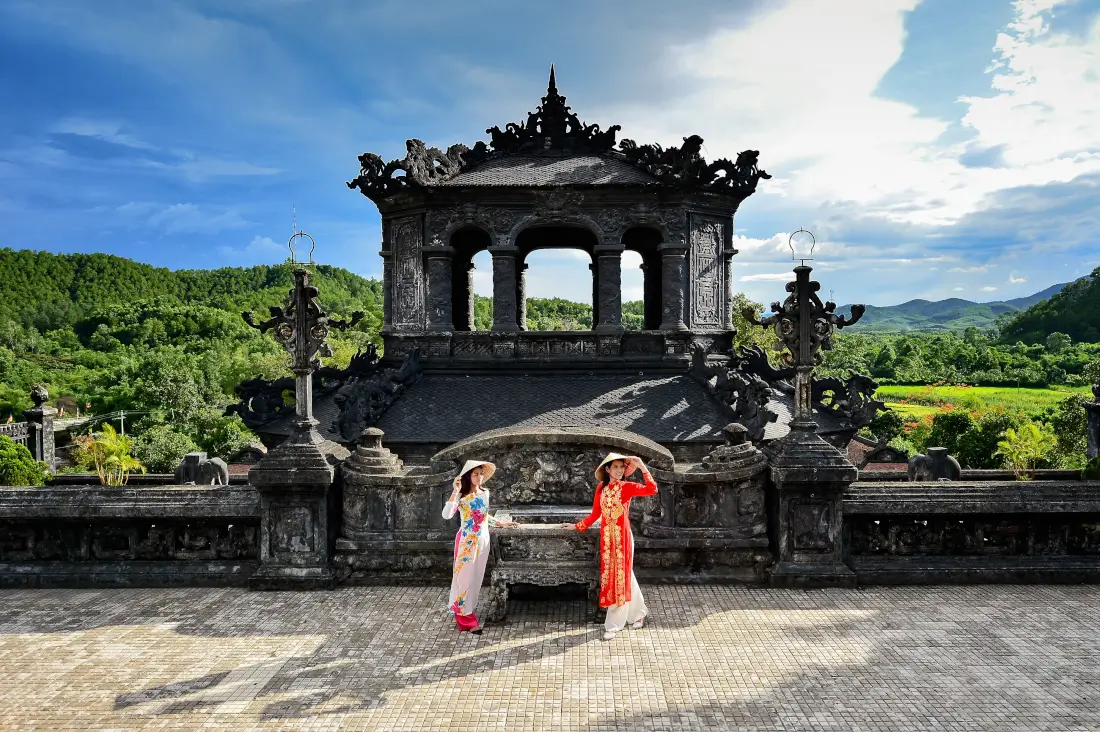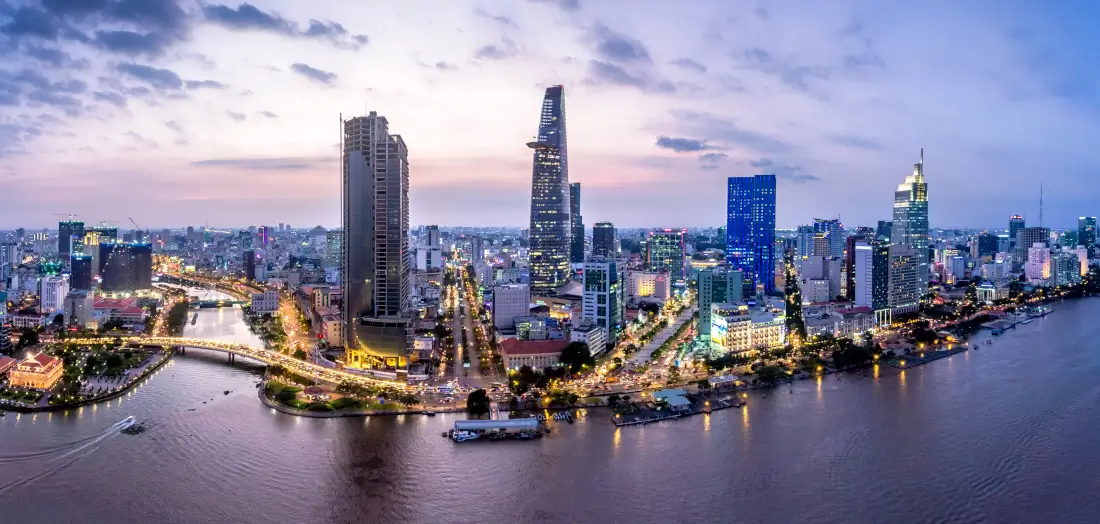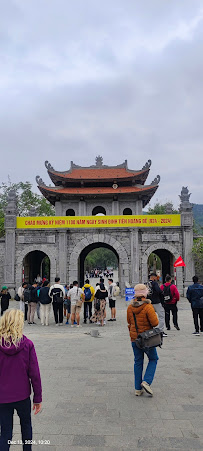Vietnam Temperature in November

- Average Temperature Range (°C and °F): Vietnam temperature in November in the north ranges from 18–25°C (64–77°F) in Hanoi and Ninh Binh, while highland areas like Sapa are cooler at 10–...

- Average Temperature Range (°C and °F): Vietnam temperature in November in Central Vietnam averages between 23–28°C (73–82°F). The weather is transitioning from the rainy season to drier ...

- Average Temperature Range (°C and °F): Vietnam temperature in November in the south is warm and consistent, ranging from 24–32°C (75–90°F). November marks the start of the dry season, br...
Frequently Asked Questions (FAQs)
Yes, November is one of the best times to visit Vietnam. It marks the start of the dry season in the south, while the north enjoys cool autumn weather with less rain. Central Vietnam begins to transition out of the rainy season, especially toward the end of the month. With fewer tourists, better travel deals, and pleasant outdoor conditions, it’s ideal for cultural tours, beach visits, and nature treks. Whether you're exploring Hanoi’s historic streets or cruising the Mekong Delta, the Vietnam temperature in November offers comfort and variety across all regions.
Vietnam in November is pleasantly warm in the south and cooler in the north, offering a refreshing climate across the country. In southern regions like Ho Chi Minh City, temperatures range between 24-32°C (75-90°F), making it ideal for tropical travel. The central coast is slightly cooler with occasional rain, while northern cities like Hanoi or Sapa range from 15-25°C (59-77°F). Highland areas can get chilly at night, so packing layers is wise. Overall, the Vietnam temperature in November creates a mild and enjoyable environment for all kinds of travel, from beaches to mountains.
Rainfall in Vietnam decreases significantly in November, especially in the north and south. Northern areas like Hanoi and Sapa see dry, cool days, while the southern region begins its dry season with mostly sunny weather and occasional brief showers. Central Vietnam, including Hue and Hoi An, may still experience moderate rain earlier in the month, but conditions improve by late November. Rain typically occurs in short bursts, often in the afternoon or evening. Despite some regional variation, the Vietnam temperature in November and reduced rainfall make it a favourable time to explore the country with minimal weather disruptions.
In November, temperatures across Vietnam vary by region. The Vietnam temperature in November ranges from 10-20°C (50-68°F) in mountainous areas like Sapa, 18-25°C (64-77°F) in northern cities such as Hanoi and Ninh Binh, and 23-28°C (73-82°F) in central regions like Hoi An. The southern part, including Ho Chi Minh City and the Mekong Delta, is the warmest, with temperatures around 24-32°C (75-90°F). This wide range offers something for every traveller. Cool autumn air in the north, beach-ready warmth in the south, and a mix of both in central Vietnam, depending on the exact location and time of month.
Southern Vietnam typically enjoys the best weather in November. It marks the start of the dry season, bringing clear skies, low humidity, and warm temperatures around 24-32°C (75-90°F). Ho Chi Minh City, the Mekong Delta, and islands like Phu Quoc become perfect for beach trips, boat tours, and open-air sightseeing. While central Vietnam may still see lingering rains and the north cools down, the Vietnam temperature in November in the south remains consistently comfortable and travel-friendly. With minimal rainfall and sunny days, the southern region is ideal for travellers seeking a tropical climate with reliable weather.
Yes, November is a good time to visit beaches in southern and central Vietnam. In places like Phu Quoc, Nha Trang, and Da Nang, the weather begins to clear up, especially by mid-to-late November. The temperature in Vietnam in November along the coast ranges from 24-30°C (75-86°F), making the sea warm and the air pleasant for sunbathing and swimming. While central Vietnam may still see some early-month rain, beach conditions improve quickly. Southern beaches are mostly dry and sunny. You’ll also benefit from fewer crowds and better hotel rates compared to peak winter months.
November offers diverse travel experiences across Vietnam. You can go trekking in Sapa, enjoy boat rides in Ninh Binh, or take part in street food tours in Hanoi and Ho Chi Minh City. Hoi An’s lantern-lit nights and the early dry season in the Mekong Delta are especially scenic. Cultural visits to imperial sites in Hue and pagodas in the north are also ideal this month. The Vietnam temperature in November provides mild conditions, making walking, hiking, and exploring local life both comfortable and photogenic. Plan activities in the early morning or late afternoon for the best light and weather.
Absolutely! November is one of the best months for trekking in northern Vietnam. Cool, dry weather in places like Sapa, Ha Giang, and Bac Ha creates perfect trail conditions. Daytime Vietnam temperature in November ranges from 15-23°C (59-73°F), while mountain nights can drop to around 10°C (50°F). Clear skies, golden landscapes, and post-harvest fields offer breathtaking views and excellent photography opportunities. Rainfall is minimal, and trails are less slippery than in previous months. Start treks early in the day for the clearest skies and most comfortable temperatures. Pack layers and good hiking shoes for highland travel.
No, most tourist attractions in Vietnam are less crowded in November. As it’s the shoulder season, international visitor numbers drop between the busy summer and the upcoming winter holidays. This allows for a more relaxed experience at landmarks like Halong Bay, Hoi An Ancient Town, and the Cu Chi Tunnels. You’ll also find better availability at hotels and less waiting time at popular spots. The Vietnam temperature in November is comfortable for sightseeing without the intense heat or humidity. You can enjoy cultural sites, markets, and natural parks at a slower pace, making it one of the most enjoyable months to explore.
Pack a variety of clothing to suit Vietnam’s regional climates in November. Lightweight shirts and pants are ideal for southern and central areas, where the Vietnam temperature in November remains warm (24-32°C). Include a light sweater or jacket for cooler northern regions, especially if visiting Sapa or Hanoi, where temperatures drop in the evenings. A raincoat or travel umbrella is still useful in central Vietnam, particularly early in the month. Don’t forget comfortable walking shoes, sun protection (hat, sunscreen, sunglasses), and insect repellent for nature trips and rural visits. Layering helps you adjust across different climates easily.
Yes, November is a great time for budget-conscious travel in Vietnam. With the summer crowds gone and the winter holiday rush not yet started, flight prices, hotel rates, and tour packages tend to be lower. The Vietnam temperature in November is pleasant across regions, allowing you to enjoy beaches, cities, and mountains without needing costly gear or weather-related changes. Many hotels offer off-season discounts, and you can often find promotions on transportation and attractions. Fewer tourists also mean less competition for popular activities, helping you save while experiencing the best of Vietnam with greater comfort and flexibility.
In November, Vietnam hosts several local and cultural festivals. The most notable is the OCOP Fair in Hanoi, which showcases traditional crafts and regional specialities. In Hoi An, the Lantern Festival is observed if it coincides with the full moon, offering a magical riverside experience. The Cham people in central regions may also celebrate the Kate Festival, though its timing can vary by lunar calendar. These events provide deep insight into Vietnamese heritage and vibrant local traditions. The Vietnam temperature in November creates a pleasant climate that allows visitors to comfortably enjoy both indoor and outdoor events without extreme heat or rainfall.
Yes, November marks the start of the high tourist season in Vietnam, especially in central and southern regions. With drier weather, clear skies, and cooler days, it’s a preferred month for international travellers. Popular destinations like Hoi An, Ho Chi Minh City, and Phu Quoc start getting busy, though northern Vietnam, including Hanoi and Sapa, sees a moderate but rising tourist flow. Since the Vietnam temperature in November is ideal for sightseeing and nature trips, this month attracts culture enthusiasts, trekkers, and beachgoers alike. Booking accommodations and tours in advance is recommended to avoid seasonal price surges.
Yes, the weather across Vietnam in November differs significantly by region. Northern Vietnam, including Hanoi and Ha Long Bay, experiences cooler autumn weather with temperatures ranging from 18°C to 24°C. The central region begins to dry out after October rains, though occasional showers may linger. Southern Vietnam, including Ho Chi Minh City and the Mekong Delta, enters its dry season, offering warm, sunny days averaging 25°C to 30°C. The variation in Vietnam's temperature in November is due to the country’s north-to-south stretch, so travellers should pack accordingly depending on their itinerary.
Yes, November is an excellent time to visit Vietnam’s southern islands such as Phu Quoc, Con Dao, and Nam Du. These destinations transition into the dry season, with calm seas and ample sunshine, ideal for beach relaxation and water activities. In contrast, some central coastal islands like Ly Son or Cham Island may still face unpredictable weather due to the lingering monsoon. Overall, thanks to the mild Vietnam temperature in November, island getaways are both scenic and accessible, especially in the south, where clear skies and gentle breezes dominate the climate.
Absolutely. Swimming and snorkelling are ideal in southern Vietnam during November, particularly around Phu Quoc, Con Dao, and Nha Trang, where the dry season begins. Water visibility improves and sea conditions become calmer, perfect for marine exploration. However, in the central coast areas like Da Nang or Hoi An, cooler air and water temperatures might reduce comfort levels for long swims. Northern beaches are generally too cold for swimming. The overall Vietnam temperature in November supports aquatic activities primarily in the southern regions, making it a great time for beach lovers.
Travel disruptions in Vietnam during November are relatively rare, especially compared to the wetter months. However, central Vietnam may still experience residual rainfall and occasional flooding, particularly in low-lying or mountainous areas like Hue or Da Nang. Flight or train delays are uncommon but can occur in case of unexpected weather. On the other hand, northern and southern regions generally enjoy stable and pleasant weather. With mild Vietnam temperatures in November, most roads are accessible, and intercity travel is smooth, making it a reliable month for long-distance journeys and domestic flights.
In November, sunrise in Vietnam typically occurs between 5:45 AM and 6:15 AM, while sunset falls between 5:15 PM and 5:30 PM, depending on the region. The daylight hours are fairly consistent across the country, offering around 11 to 12 hours of light daily, ideal for sightseeing and day trips. The early sunset allows travellers to enjoy beautiful golden-hour photography and night markets. The moderate Vietnam temperature in November ensures you can enjoy both sunrise hikes in the north and sunset cruises in places like Ha Long Bay or the Mekong Delta without weather discomfort.
Air quality in Vietnam during November varies by location. Hanoi and northern cities may experience reduced air quality due to temperature inversions, increased traffic, and crop burning in nearby provinces. It's advisable to monitor real-time AQI levels, especially if you have respiratory sensitivities. Conversely, central and southern regions, including Hoi An, Da Nang, and Ho Chi Minh City, usually enjoy better air quality with improved ventilation from the dry season onset. Despite occasional pollution in urban centres, the Vietnam temperature in November provides comfortable conditions for most outdoor activities.
No, Hanoi is pleasantly cool in November, with average daytime temperatures ranging between 18°C to 24°C, and cooler nights around 16°C. The weather is dry and crisp, signalling the arrival of autumn. It’s a refreshing break from the summer humidity and rain, perfect for city walks, cultural sightseeing, and day trips to places like Ninh Binh or Ha Long Bay. The mild Vietnam temperature in November in Hanoi encourages longer explorations and makes this month one of the most comfortable times to visit the northern capital.
















